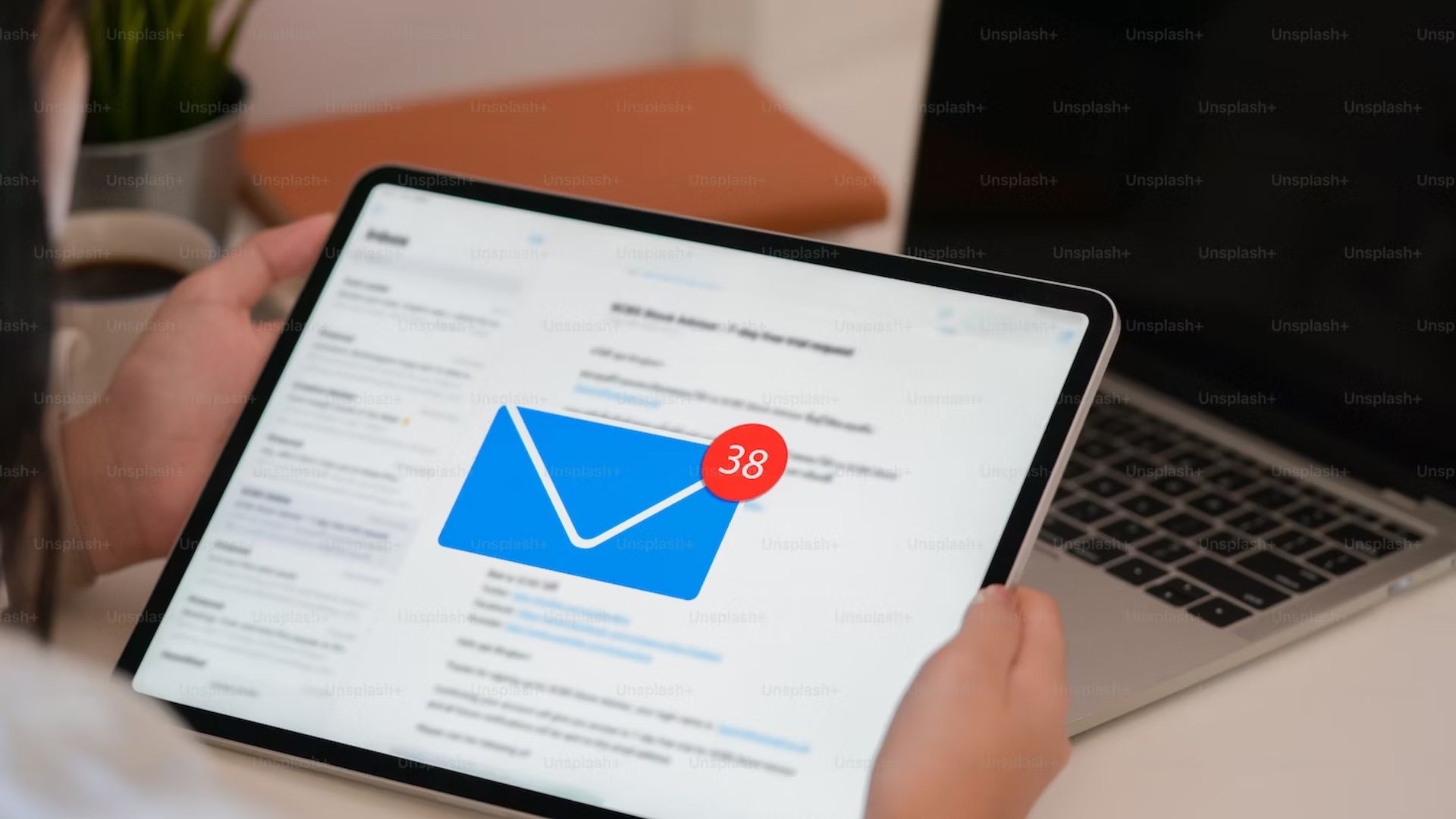Inbox placement, also known as the successful delivery of emails to the primary inbox rather than spam folders, is a critical challenge for marketers and businesses worldwide.
Did you know that about 20% of marketing emails never reach the intended inbox? An email’s journey from the sender to the recipient’s inbox contains obstacles. [1]
According to Hubspot, the average email open rate in 2023 is around 38%, indicating that many emails might not even get opened due to poor placement. [2]
Therefore, Understanding the factors influencing inbox placement and adopting effective strategies not only elevates your email marketing game but also boosts engagement rates.
In this guide, we will explore how to ensure your emails land in the primary inbox. You’ll also learn essential tactics for successful email delivery. So, join us to discover the secrets for your emails to land where they belong.
But first, let’s define inbox placement to understand it better:
What Is Inbox Placement?
Inbox placement refers to the rate at which your emails successfully land in a recipient’s primary inbox rather than being redirected to the spam folder.
The Inbox Placement Rate (IPR) is calculated by dividing the number of emails delivered to the primary inbox by the total number of emails sent and multiplying the result by 100 to get a percentage.
For example, if you send 1,000 emails and 900 of them successfully reach the recipient’s inbox, the calculation would be 900 divided by 1000. Then, multiply it by 100, meaning 90% of your emails successfully landed in the inbox.
Therefore, 95% and above is the recommended rate. [3]
Why Is It Important?
Inbox placement is vital for successful email delivery in your email marketing campaigns.
This matters because it decides if your emails go to the primary inbox or spam. Being in the main inbox ensures people see and open your emails. Meanwhile, people might miss them if they end up in the junk folder.
Additionally, good inbox placement means your messages reach the right spot, increasing the chances of people noticing and engaging with your emails. It’s similar to ensuring your mail goes to the front door instead of a hidden corner, making your email efforts more effective.
6 Factors Affecting Inbox Placement Rates
Source: UnSplash
1. Sender Reputation
Your sender reputation is a score that tells mailbox providers how much they can trust your emails.
So, if your reputation is high, it’s like having a VIP pass to the primary inbox; your emails get priority treatment. Conversely, a poor reputation can land your emails in the spam folder.
Keeping your sender image positive involves steering clear of spam complaints, regularly checking your sender score, and avoiding spam traps set to catch those not following good email practices.
Therefore, maintaining a clean reputation is like having a golden key to the primary inbox, ensuring your emails are welcomed guests.
Read also: IP Reputation of Your Email
2. Email Content and Design
Crafting the perfect email is an art. Your email content is the heart of the message, and its design is the visual appeal.
Valuable content and a clean, simple design are like a magic potion for better inbox placement rates.
Therefore, avoid spammy language, use clear and concise words, and ensure your email looks good on various devices. Imagine your email is an invitation; the better it looks and feels, the more likely it is to land in the primary inbox. It also ensures your message is heard and seen clearly.
3. Subscriber Engagement
Subscriber engagement serves as the heartbeat of email success. High engagement rates tell mailbox providers they value your emails, resulting in elevated placement rates.
Conversely, low engagement may trigger spam filters, calling for a closer look. Therefore, encouraging subscribers to whitelist your email shows that your emails are welcome additions. Reviving inactive subscribers with re-engagement campaigns brings life back to silent connections.
4. Email Sending Frequency
Source: UnSplash
Imagine sending too many texts to a friend; it might get annoying. The same goes for email frequency. Sending emails too often can raise eyebrows and lead to poor inbox placement rates.
Therefore, striking a balance is crucial. Setting clear expectations for email frequency during the subscription process is like establishing a friendly agreement.
Preference centers allow subscribers to control how often they hear from you, contributing to a positive email experience. So, you have to find the sweet spot – not too much, not too little – but just enough to stay connected without overwhelming.
Related article: Best Time to Send a Cold Email
5. Mobile Optimization of Emails
Mobile phones are like the key to everyone’s digital world. Optimizing emails for mobile devices is, therefore, a no-brainer. A mobile-friendly design also ensures that your message looks good, regardless of the device.
Testing your emails on various mobile devices ensures they navigate smoothly in every situation. For instance, including a text version of your email provides a backup plan for users who prefer simplicity or have images disabled.
Lastly, it’s about making sure your message is not just accessible but a delightful experience, regardless of the device used.
6. Personalization and Segmentation
Mailbox providers appreciate the personal touch, contributing to better inbox placement rates. Segmentation is like putting people into different rooms based on their preferences – it ensures everyone gets content they care about.
Collecting and using data to create personalized and targeted content speaks directly to your audience, creating a connection that mailbox providers value. It’s also about making your audience feel seen and understood, ensuring your emails are not just part of the crowd but stand out with relevance.
Related: Personalized Cold Email – A List of Best Practices That Work in 2023
12 Ways to Improve Your Email Inbox Placement Rate
Source: UnSplash
1. Clean Your Email List Regularly
Maintaining a tidy email list is essential for optimal performance. Therefore, regularly removing inactive or outdated email addresses is a proactive measure.
This practice ensures your list remains efficient, contributing to a positive sender reputation. A streamlined list also directly influences inbox deliverability and the success of your email marketing campaigns.
2. Segment Your Email List for Targeted Content
Segmenting your email list is like tailoring your message to fit different audiences. Therefore, organizing your subscribers into segments based on preferences, demographics, or behaviors allows for the targeted content’s delivery.
Moreover, this personalized approach enhances engagement and positively influences your sender reputation, making it a crucial factor in achieving better inbox placement rates.
A well-segmented email list also ensures that your messages resonate with specific groups. As a result, it fosters a deeper connection with your audience and maximizes the impact of your email campaigns.
3. Provide Options for Content Preferences and Frequency
Offering subscribers choices in content and email frequency creates a tailored experience. It also minimizes the risk of spam complaints and maximizes engagement.
Therefore, balancing customization with structured communication cultivates a positive relationship. As a result, it contributes to improved inbox placement rates.
4. Avoid Spam Trigger Words in Email Content
Avoiding standard spam trigger terms is vital for successful delivery. Instead of phrases like “guaranteed” or “earn money fast,” use clear alternatives. This ensures your messages land in the recipient’s inbox, not the spam folder.
Additionally, straightforward language enhances deliverability, maintaining a direct path to the primary inbox.
Choosing thoughtful vocabulary also reduces the risk of misclassification as spam, resulting in more efficient email delivery. This strategic approach contributes to a highly effective email marketing strategy.
5. Monitor and Address Bounces and Complaints
Source: UnSplash
Quickly address bounced emails to ensure accurate delivery, correcting any issues like incorrect addresses. Effectively managing complaints is also essential; when recipients express disinterest, take prompt action to maintain a positive sender reputation. Think of it as streamlining the pathway for your emails.
This proactive approach ensures your emails reach their intended destinations and land in the inbox, preventing detours to the spam folder. It’s also a crucial aspect of sustaining a healthy email delivery process and enhancing the overall effectiveness of your email marketing strategy.
6. Test Your Emails With An Email Deliverability Testing Tool
Before launching emails, conduct a thorough inbox placement test using deliverability testing tools.
Think of it as a pre-flight check for your messages. These tools ensure your emails are well-prepared to navigate different mailbox provider landscapes.
With Inboxally’s Testing Tool, you can assess email spam scores, optimize subject lines, and enhance content for improved deliverability. It also helps identify and address issues, ensuring your emails reach recipients successfully and maximizing the effectiveness of your email campaigns.
Related: Best Email Deliverability Tools
7. Use Double Opt-in Processes for Subscriptions
Building trust and authenticity in your email relationships is foundational for long-term success. Therefore, implementing a secure double opt-in process for subscriptions validates the genuine interest of your subscribers.
This practice also establishes a solid foundation for a positive email relationship, minimizing the risk of spam complaints. You cultivate trust and engagement by ensuring subscribers willingly confirm their interests.
As a result, it contributes to a healthier email list and improved placement rates in your inbox.
8. Conduct A/B Testing for Subject Lines and Content
Exploring different approaches through A/B testing is a strategic method to optimize your email campaigns.
This process involves testing variations of subject lines and content to identify the most effective elements. By fine-tuning these components, you enhance the overall performance of your emails and positively influence inbox deliverability.
9. Use Email Authentication
Source: UnSplash
In email marketing, ensuring the authenticity of your messages is crucial. This is achieved through email authentication methods like Domain Keys Identified Mail (DKIM) and Domain-Based Message Authentication.
These methods act as digital signatures for your emails, providing a secure stamp of legitimacy. Much like using a certified postal service, these authentication measures verify the origin of your emails, building trust with mailbox providers.
Lastly, this proactive step enhances your sender reputation and significantly improves inbox placement, reinforcing the integrity of your email campaigns.
Related: DMARC vs DKIM – How Do They Differ and Which One Do You Need
10. Implement Feedback Loops for User Engagement
Establishing a two-way communication channel promotes a dynamic conversation. Therefore, implementing feedback loops for user engagement allows you to listen and respond to subscriber interactions.
It also provides valuable insights, helping you adapt your email strategies to meet subscriber expectations and contribute to positive email deliverability.
11. Use Clear Call-to-Actions (CTAs)
Guiding your audience with a clear and defined call-to-action (CTA) is essential for effective communication. These directives enhance the user experience by providing clear instructions on desired actions.
In addition, well-crafted CTAs positively influence engagement and contribute to improved placement rates in your inbox. Creating straightforward and compelling CTAs also empowers subscribers to take meaningful actions, leading to a more prosperous and impactful email marketing campaign.
12. Prioritize Engagement Over Mass Distribution
Valuing quality over quantity is a universal principle. Prioritizing quality interactions also ensures that your emails resonate with relevance and value. This approach positively impacts inbox placement rates by fostering deeper connections with your audience.
By tailoring your communications to prioritize engagement, you create a more personalized and impactful email experience.
Winding Up
Source: UnSplash
Inbox placement is all about ensuring your emails land where you intend – in the primary inbox. It directly impacts your campaign’s success.
Therefore, understanding factors like sender reputation, content quality, and engagement paves the way for effective delivery. Think of it like guiding your messages through a digital route.
Lastly, avoiding spam traps, managing bounces, and embracing authenticity are keys to success. So, prioritize these strategies for a seamless and impactful email delivery process.
Need help with getting your emails into the right inbox? Wondering how to secure prime placement? InboxAlly has the answers! Elevate your email game and ensure top-tier inbox placement. Try InboxAlly today and watch your emails shine where they belong.
Frequently Asked Questions (FAQs)
What is inbox placement testing?
Inbox placement testing is a test that checks how well emails end up in the primary inbox. This testing mimics real-world scenarios, evaluating factors influencing successful delivery.
Foreseeing any issues is also intelligent and ensures your emails land where you want them. As a result, this testing process is a crucial step in optimizing your email delivery strategy.
What affects inbox placement?
Several things impact where your emails end up. So, it’s more than just chance. More specifically, how people see you, your content’s quality and your recipients’ engagement play a role. It’s a mix of your sender reputation, exciting content, and recipient interaction.
Also, watch out for common email pitfalls like spam triggers. Avoiding these pitfalls and getting the mix right ensures your emails reach the primary inbox.
How can I improve my inbox placement?
Cultivate a positive sender reputation by being a good email friend. Craft interesting content people want to read, make it work well on phones, and quickly address issues like bounces and complaints.
Ensuring your emails are engaging, mobile-friendly, and hassle-free, you secure their place in the primary inbox. Doing so makes your email campaign a front-runner for success.
How do I track my inbox placement?
Use analytics and email deliverability tools such as InboxAlly to track your inbox placement.
Additionally, check how many people read your emails and where they end up. These insights refine and optimize your email strategy, ensuring your messages reach the primary inbox consistently.
References:
[1] https://www.retaildive.com/news/study-20-of-marketing-e-mails-dont-reach-the-inbox/448911/
[2] https://blog.hubspot.com/sales/average-email-open-rate-benchmark





